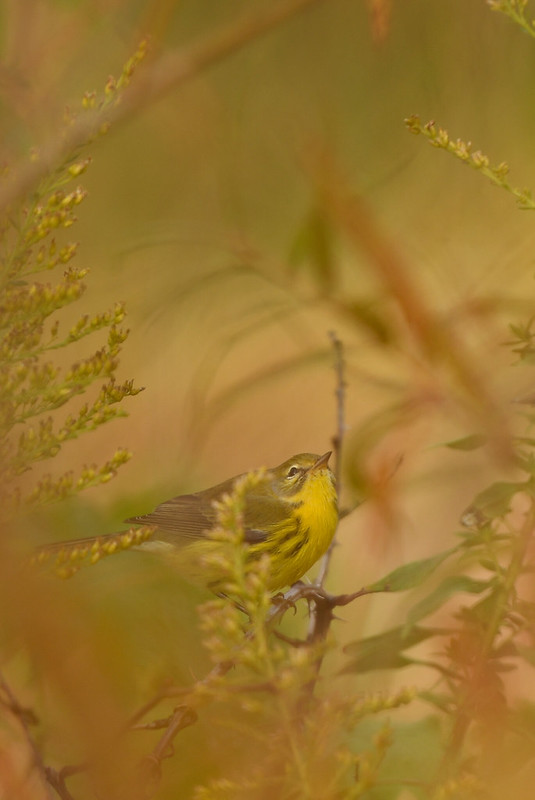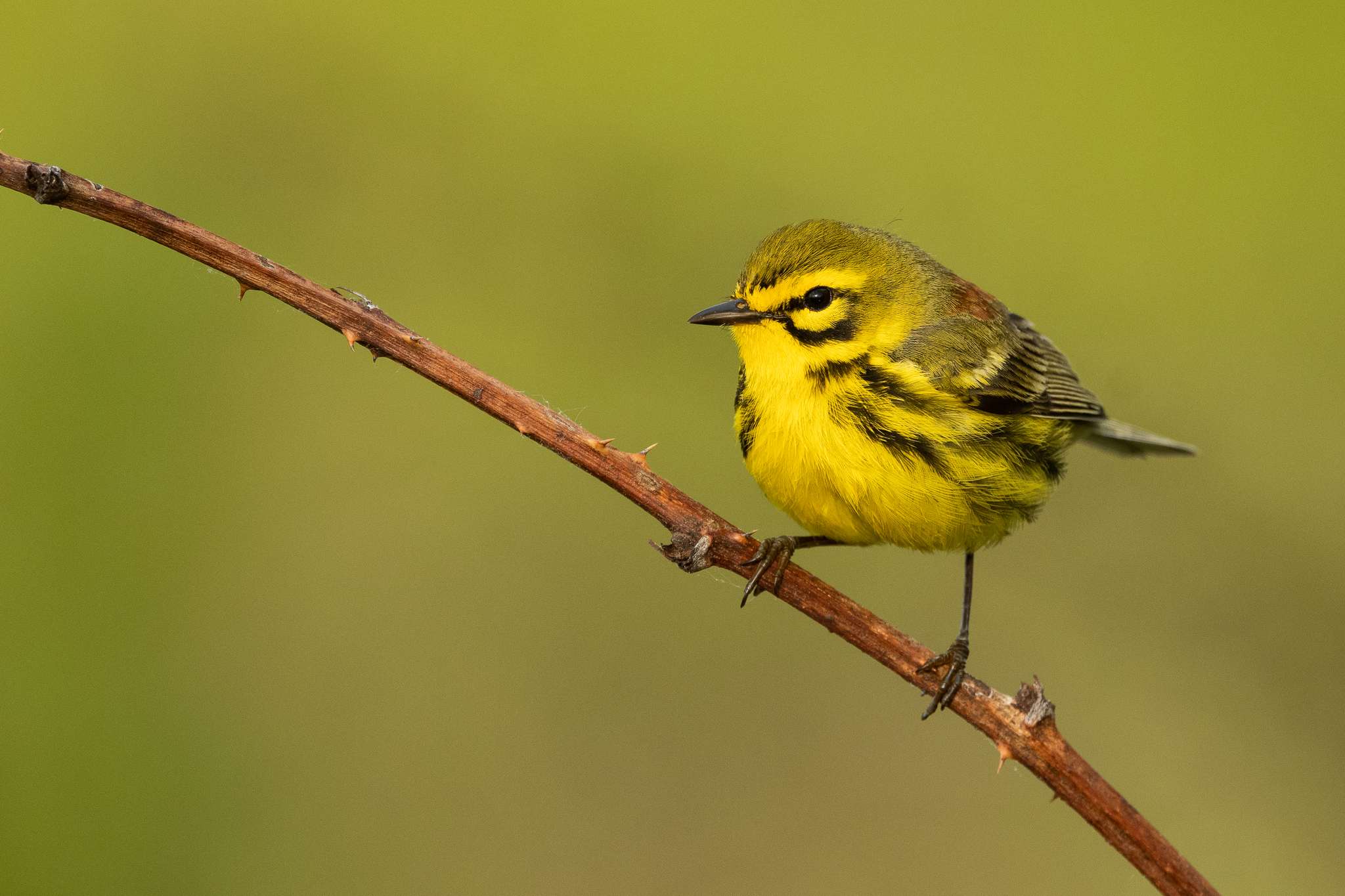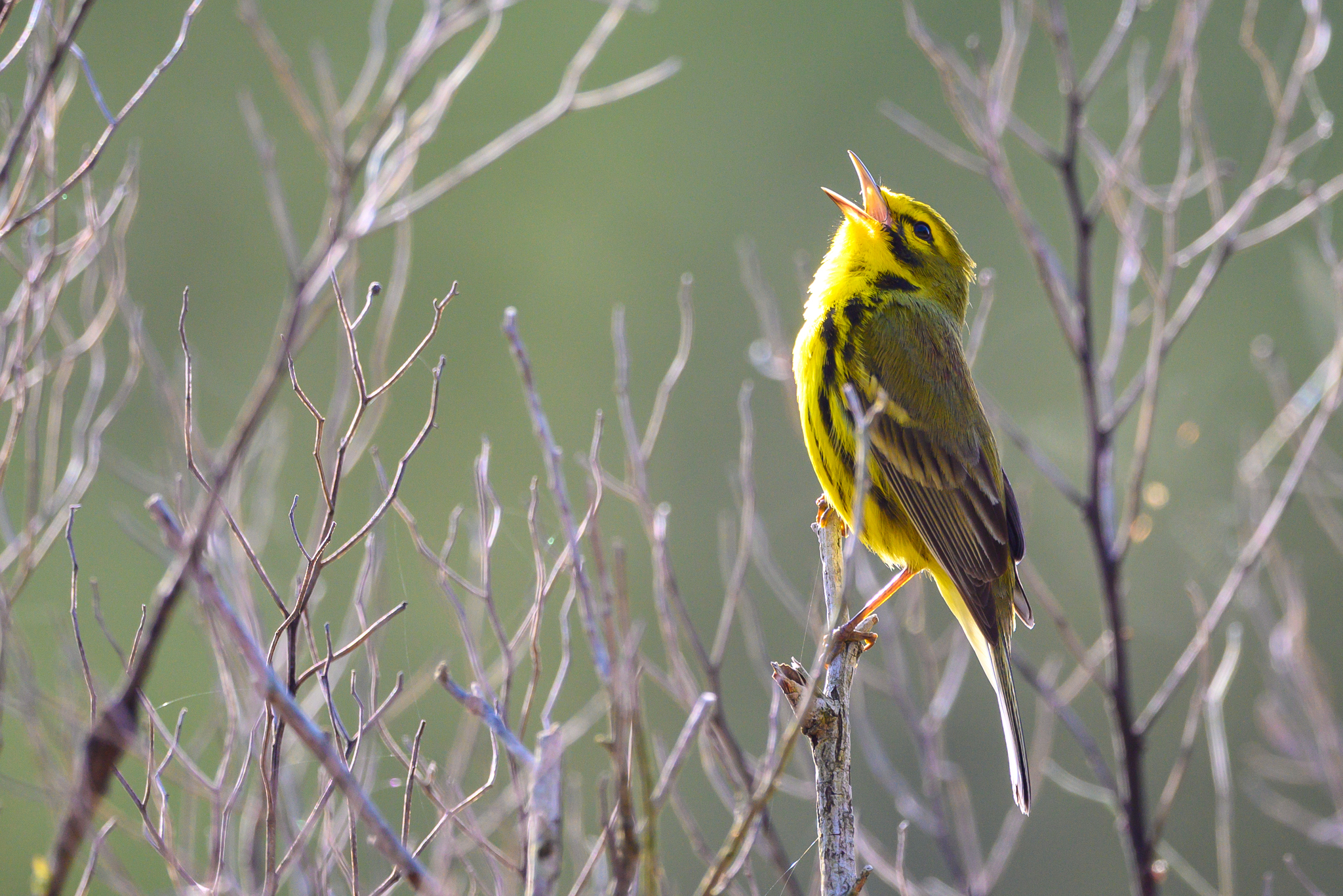Map Snapshot

























436 Records
Seasonality Snapshot
Source: Wikipedia
This article includes a list of general references, but it lacks sufficient corresponding inline citations. (November 2010) |
| Prairie warbler | |
|---|---|

| |
| Male, Florida | |

| |
| Female, Florida | |
| Scientific classification | |
| Domain: | Eukaryota |
| Kingdom: | Animalia |
| Phylum: | Chordata |
| Class: | Aves |
| Order: | Passeriformes |
| Family: | Parulidae |
| Genus: | Setophaga |
| Species: | S. discolor
|
| Binomial name | |
| Setophaga discolor (Vieillot, 1809)
| |

| |
| Range of S. discolor Breeding range Winter range
| |
| Synonyms | |
| |
The prairie warbler (Setophaga discolor) is a small songbird of the New World warbler family.
Description
[edit]These birds have yellow underparts with dark streaks on the flanks, and olive overparts with rusty streaks on the back; they have a yellow line above the eye, a dark line through it, and a yellow spot below it. These birds have black legs, long tails, two pale wing bars, and thin pointed bills. Coloring is duller in female and immatures.
Measurements
[edit]| Standard Measurements[2][3] | |
|---|---|
| length | 4.3–5.2 in (110–130 mm) |
| weight | 7.7 g (0.27 oz) |
| wingspan | 7 in (180 mm) |
| wing | 54.4–58.2 mm (2.14–2.29 in) |
| tail | 47.5–50.5 mm (1.87–1.99 in) |
| culmen | 9–10.2 mm (0.35–0.40 in) |
| tarsus | 17–19 mm (0.67–0.75 in) |
Vocalizations
[edit]Prairie warblers have two categories of songs, referred to as Type A and Type B. Type A songs are typically a series of ascending buzzy notes. The B songs are an ascending series of whistled notes that often contain some buzzy notes. Compared to A songs, the B songs are lower in pitch, have fewer, longer notes. The total song length is longer as well in Type B songs. The use of these two song categories is associated with certain contexts. A songs are sung throughout the day when males first arrive on their breeding grounds. Once males are paired they begin to sing B songs during the dawn chorus and then will intersperse A songs in their singing during the rest of the day. During this later period of singing A songs are typically used near females, near the nest, and in the center of their territories. In contrast B songs are used when interacting or fighting with other males and near the borders of their territories.
Part of their call note repertoire is a tsip call. During dawn, chorus B songs are interspersed with rapid loud "check" calls.
Distribution and habitat
[edit]These birds are permanent residents in the southern parts of their range. Other birds migrate to north-eastern Mexico and islands in the Caribbean.
Behaviour and ecology
[edit]Breeding
[edit]Their breeding habitats are brushy areas and forest edges in eastern North America. The prairie warbler's nests are open cups, which are usually placed in a low area of a tree or shrub. Incubation period is 12 to 13 days.[2]
Feeding
[edit]Prairie warblers forage actively on tree branches, and sometimes fly around with the purpose of catching insects, which are the main food source of these birds.
Behaviour
[edit]These birds wag their tails frequently.
Status
[edit]The numbers of these birds are declining due to habitat loss; this species also suffers from nest parasitism by the brown-headed cowbird.
Gallery
[edit]-
At Castellow Hammock, Miami, FL.
References
[edit]- ^ BirdLife International (2016). "Setophaga discolor". IUCN Red List of Threatened Species. 2016: e.T22721725A94726026. doi:10.2305/IUCN.UK.2016-3.RLTS.T22721725A94726026.en. Retrieved 11 November 2021.
- ^ a b Godfrey, W. Earl (1966). The Birds of Canada. Ottawa: National Museum of Canada. p. 339.
- ^ Sibley, David Allen (2000). The Sibley Guide to Birds. New York: Knopf. p. 440. ISBN 0-679-45122-6.
- Houlihan, Peter W. (2000). The Singing Behavior of Prairie Warblers (Dendroica discolor) (Ph.D.). University of Massachusetts - Amherst. Retrieved 27 October 2014.
External links
[edit]- Prairie warbler - Dendroica discolor - USGS Patuxent Bird Identification InfoCenter
- Prairie warbler species account - Cornell Lab of Ornithology
- Prairie warbler Stamps[usurped] from Barbados, British Virgin Islands, Grenada, St. Kitts at bird-stamps.org[usurped]
- "Prairie warbler media". Internet Bird Collection.
- Prairie warbler photo gallery at VIREO (Drexel University)
- Prairie warbler bird sound at Florida Museum of Natural History
- BirdLife species factsheet for Dendroica discolor
- Interactive range map of Dendroica discolor at IUCN Red List
- Audio recordings of Prairie warbler on Xeno-canto.




























